Michalis Vrigkas
Human Activity Recognition Using Robust Adaptive Privileged Probabilistic Learning
Sep 19, 2017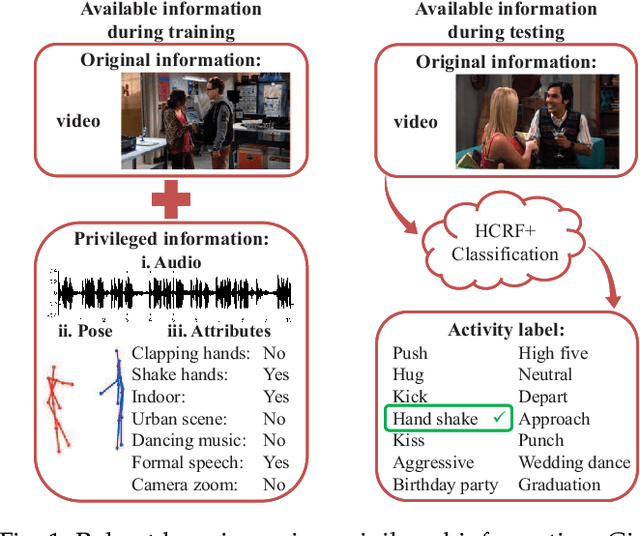
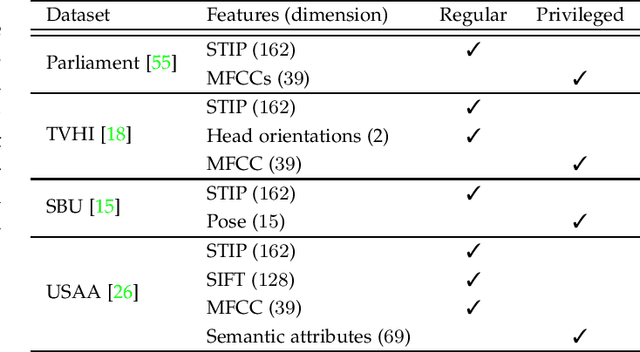
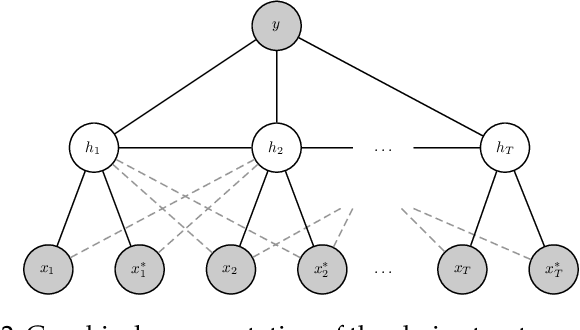
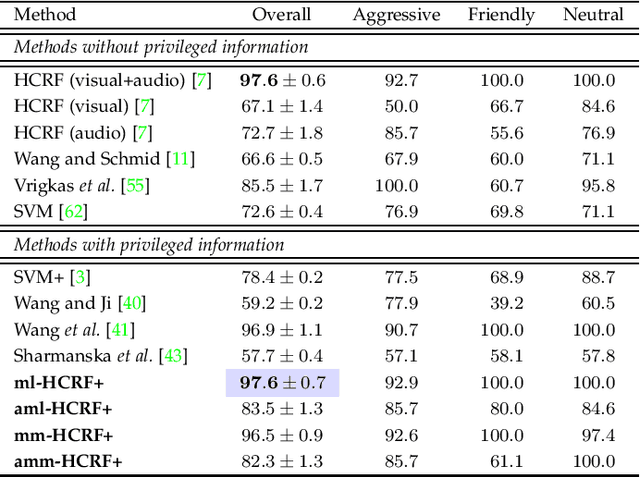
Abstract:In this work, a novel method based on the learning using privileged information (LUPI) paradigm for recognizing complex human activities is proposed that handles missing information during testing. We present a supervised probabilistic approach that integrates LUPI into a hidden conditional random field (HCRF) model. The proposed model is called HCRF+ and may be trained using both maximum likelihood and maximum margin approaches. It employs a self-training technique for automatic estimation of the regularization parameters of the objective functions. Moreover, the method provides robustness to outliers (such as noise or missing data) by modeling the conditional distribution of the privileged information by a Student's \textit{t}-density function, which is naturally integrated into the HCRF+ framework. Different forms of privileged information were investigated. The proposed method was evaluated using four challenging publicly available datasets and the experimental results demonstrate its effectiveness with respect to the-state-of-the-art in the LUPI framework using both hand-crafted features and features extracted from a convolutional neural network.
Adaptive SVM+: Learning with Privileged Information for Domain Adaptation
Aug 30, 2017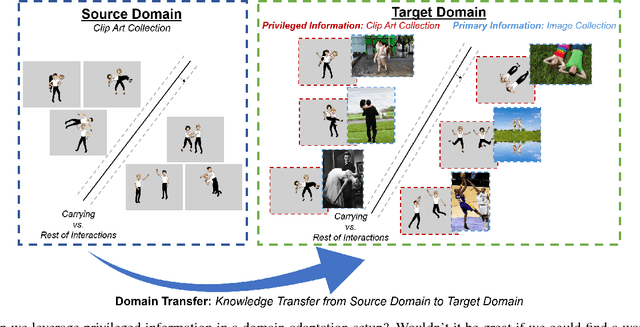
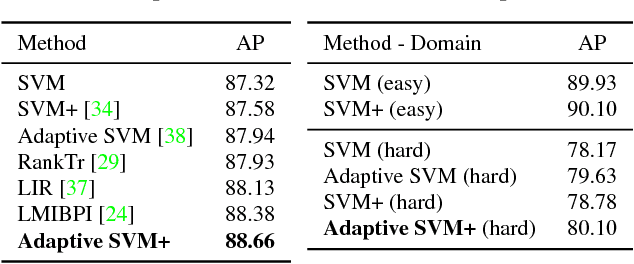


Abstract:Incorporating additional knowledge in the learning process can be beneficial for several computer vision and machine learning tasks. Whether privileged information originates from a source domain that is adapted to a target domain, or as additional features available at training time only, using such privileged (i.e., auxiliary) information is of high importance as it improves the recognition performance and generalization. However, both primary and privileged information are rarely derived from the same distribution, which poses an additional challenge to the recognition task. To address these challenges, we present a novel learning paradigm that leverages privileged information in a domain adaptation setup to perform visual recognition tasks. The proposed framework, named Adaptive SVM+, combines the advantages of both the learning using privileged information (LUPI) paradigm and the domain adaptation framework, which are naturally embedded in the objective function of a regular SVM. We demonstrate the effectiveness of our approach on the publicly available Animals with Attributes and INTERACT datasets and report state-of-the-art results in both of them.
 Add to Chrome
Add to Chrome Add to Firefox
Add to Firefox Add to Edge
Add to Edge